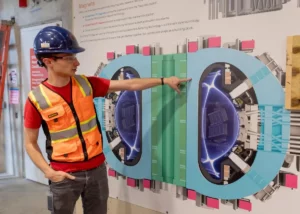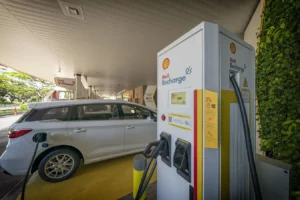
Designing For Sustainability: How User Experience Transforms Environmental Action
As we navigate the complexities of environmental sustainability, it’s clear that companies must take a proactive approach to transform their impact. One crucial aspect of this endeavor is the incorporation of user experience (UX) into sustainability strategies. By harnessing the power of UX design, organizations can turn sustainability from an overwhelming challenge into an engaging, achievable goal.
At Vanguard, I’ve had the opportunity to witness firsthand how UX can be a game-changer in driving environmental action. My team and I have been working with innovative startups like Evertreen to develop intuitive platforms that simplify complex environmental initiatives for users. By doing so, we can empower individuals and businesses alike to make sustainable choices without feeling overwhelmed.
A crucial aspect of sustainability design is reducing cognitive load by simplifying processes. This involves breaking down intricate environmental concepts into digestible, actionable steps. For instance, Evertreen’s streamlined interface enables companies to easily engage with reforestation efforts, converting a daunting task into an accessible and manageable endeavor.
Another essential consideration is transparency through visual storytelling. By leveraging real-time tracking interfaces, data visualization, and personalized impact dashboards, UX designers can create an emotional connection between users and sustainability goals. Evertreen’s satellite tracking technology offers partner companies the ability to receive personalized photos and videos of reforestation projects, effectively converting raw data into compelling narratives that foster empathy.
Furthermore, it’s vital to prioritize psychological design principles to create a sense of trust and credibility. This involves using clear language, minimizing barriers to entry, and ensuring seamless interactions. By showcasing real-world impact immediately, UX designers can create a tangible connection with users, fostering openness and credibility through transparent design elements.
To address the pressing issue of greenwashing, it’s crucial that companies prioritize transparency in their methodologies and provide verifiable data that users can rely on. It is essential to use neutral, factual language to ensure honesty and unbiased messaging. Furthermore, platforms like Evertreen set a standard for transparent sustainability communication by offering real-time tracking and clear documentation of environmental contributions.
The future of sustainable UX design is marked by several emerging trends. AI-powered personalization will enable the creation of tailored solutions that cater to individual needs, while immersive technologies, such as augmented reality, can be employed for innovative environmental education experiences. Real-time community impact visualization also has immense potential in fostering a deeper connection between users and sustainability goals.
As we look toward this future, it’s crucial that UX designers play a pivotal role in catalyzing change. Platforms like Evertreen offer a shining example of how thoughtful design can transform environmental action from an overwhelming task to an intuitive and rewarding experience. By prioritizing these principles, I firmly believe that the most successful sustainable technologies will not only make doing good feel easy but also natural and inspiring.
In conclusion, the integration of UX into sustainability strategies is no longer a nicety – it’s a necessity. As we work toward creating a more environmentally conscious future, we must recognize the transformative potential of UX design to drive meaningful change.
Source: www.forbes.com


